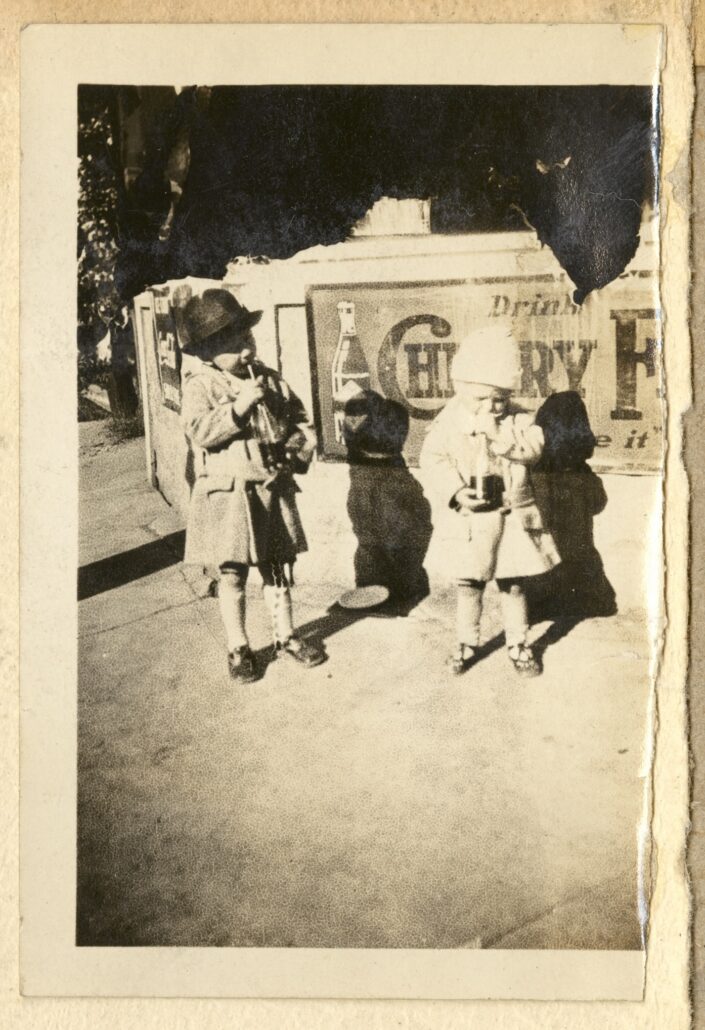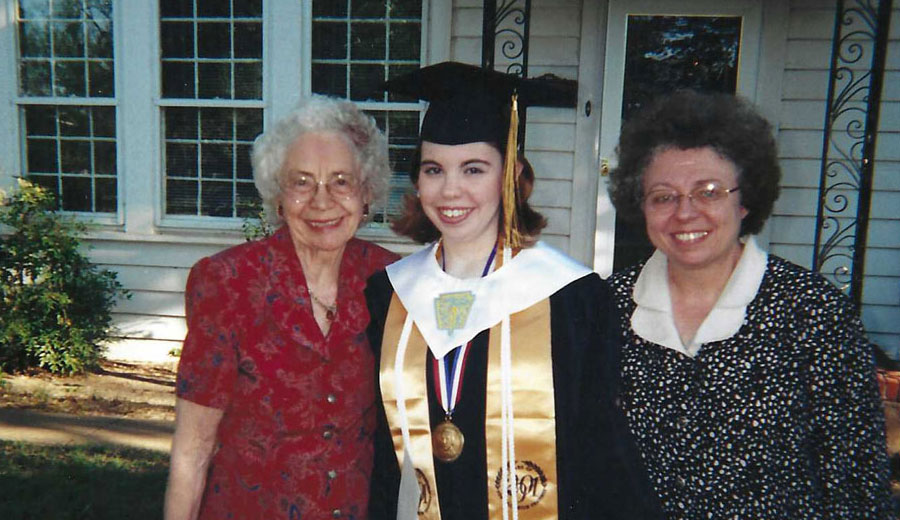Mabel Johnston, Sarah Gibson, and Sally Johnston Reid.
Image provided by Sarah Gibson and used with permission.
At Anderson Archival, we believe in the power of preserving personal histories and the profound impact it can have on individuals and families. In this blog, we share the heartfelt journey of Sarah Gibson (Filmmaker, Professor in New Media), her mother Dr. Sally Johnston Reid (composer and electroacoustic musician), and Sarah’s grandmother, Mabel Johnston.
With the help of Anderson Archival’s cutting-edge handwriting transcription AI, Sarah’s collection was not only preserved but also made searchable, creating an unexpected connection with technology that played a significant role in her healing process.
Interview with Sarah Gibson
Finding Anderson Archival
Marcia Spicer, Client Executive: Sarah, can you tell us how you ended up finding Anderson Archival?
Sarah Gibson: Honestly, it was just a Google search. I’ve had photos digitized in other places, but I needed a place that could handle letters as well. I knew I could scan them on my own, but it was too much effort, and I didn’t have the time. I was looking for someone who could do a top-notch professional job and care about the material in the way our family does. That’s when I came across Anderson Archival and reached out to learn more. I was very pleased with what I learned.
Trusting the Family Collection to Anderson Archival
Marcia: It sounds like you had a lot of trust in us to handle your family collection. Did the closer distance and the use of a courier help in your decision?
Sarah: We wanted to actually bring them up to you, take a road trip, but we just couldn’t make it work so we decided to opt for a courier.
Marcia: Can you tell me about why this was an important collection for your family? What type of material it included?
Sarah: My mother passed away in 2019. She was the family archivist, and she kept everything. I have a storage unit full of things, that I still don’t fully know what’s in there. I knew that these letters existed, and I knew that my mother’s mother wrote letters to her every week. She would write things about what’s going on in the family, catch up, and my mother wrote letters back.
The rumor goes that in that storage unit are the letters to my grandmother from my mother. And if they are, one day I might be coming back to get the other half of the collection digitized.
I also knew that my grandmother on the other side, my father’s mother, had written some letters. There’s some between my mom and her siblings.
A Family of Archivists
Sarah: I’m a filmmaker. I’m a professor in new media. I’m the oldest of three kids, and we are the recipients of great family history. My mom loved family history. When we wrote her obituary, it was so much pressure to get it right because she would read everyone’s obituary, and she would visit grave sites. She would dig in archives.
One of my siblings went to school to be an archivist. My brother is a filmmaker and also works in a library.
We knew that archiving stuff was really important.
We are connected to Daniel Johnston, a semi-famous singer-songwriter. A documentary was made of him; they archived all of his stuff and included family photos and family videos.
My grandfather would take amazing photos and develop them at their house. We are beneficiaries of all that along with some video… slides of everything.
But we still had these letters, and the letters are a different challenge. We don’t have the written component of the story. It was really important that everyone have a copy of this.
Marcia: It’s amazing to me how strong that line of archiving and documenting goes in your family.
Sarah: One of the reasons they were able to do the documentary on my uncle (Daniel Johnston) was because he shot everything and audio recorded everything he’s done. Audio recordings of him talking to people; they didn’t know they were being recorded.
We have a wealth of information that is very visual and auditorial, but we also have these documents, and these documents tell a different story.
Expert Care
Sarah: I’m happy to talk about the photo album we sent because I did say we went to other places to get our slides done, our photos done. Because the other places were cheaper, and I didn’t really care about the archival quality on those. But we had an album that has pictures of my grandfather when he was a baby. It was so delicate. I didn’t feel comfortable trying to get those photos off, and the album was falling apart.
I knew that that had to be approached with care. And that’s the kind of thing that your company can step in, and you did an excellent job. If I lost everything in the album, I would be heartbroken. I think I told you, you can tear it apart, but those photos… It would have been early 1900s. The photos are so delicate and small.
One of the things that made me so comfortable after talking to you and sending my stuff. I knew I was going to receive, like a library, that level of treatment. What is so precious to me was going to be treated like it was going to the National Archive. That meant a whole lot to know I could hand over something so precious and it would not only be archived and digitized, but also get that level of archiving.
For a random person like me, for our family. We’re not Hollywood royalty over here, we’re everyday people. We don’t have a ton of money. So what we’re getting, handled with so much care and done correctly, that was huge. We know what is right and what was okay. Sometimes you go with “okay,” but these pieces were so special, we knew they had to be done right.
Marcia: That was a fun element to our early conversations, too. Because you have that visual background, you knew things like DPI, and the qualities of an image you were looking for. It’s amazing how much those pictures tell, and what they don’t.
Sarah: One of the photos that you guys did archive is one of my favorites. It’s my grandfather when he’s about three, and he’s drinking a bottle of Coke next to his brother, it says Coca-Cola behind it and looks like an ad. It’s such an incredible thing, those photos were so tiny. And to get the quality you needed, you couldn’t just send them anywhere.
My mom got into archiving for awhile, and she went across the country and took her scanner and scanned everyone’s pictures. But she didn’t understand DPI, and it was early in the field. A lot of that stuff is just not high quality enough to use anymore. We needed the quality that will stand the test of time in ways that early digitization like she was doing just doesn’t.

Marcia: We have new standards, at least. It’s a rapidly changing thing like any technology, but we do the best we can.
Sarah: You can go so many places, but a lot of those places don’t understand the standard recommendations and why. I wouldn’t have the confidence that they’re going to give me something that does stand the test of time.
Check back in two weeks for Part 2 of our interview with Sarah Gibson, where she’ll discuss her journey of healing and how technology has enriched her digitized collection.
In the meantime, if you’re ready to find the right digitization partner, give us a call any time.


